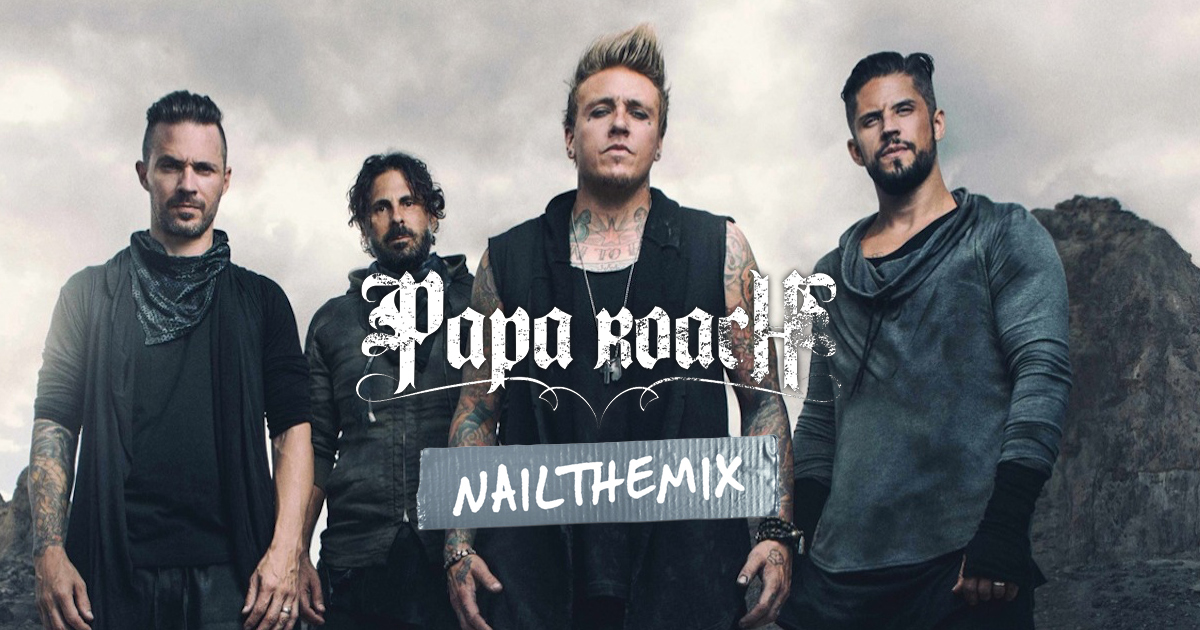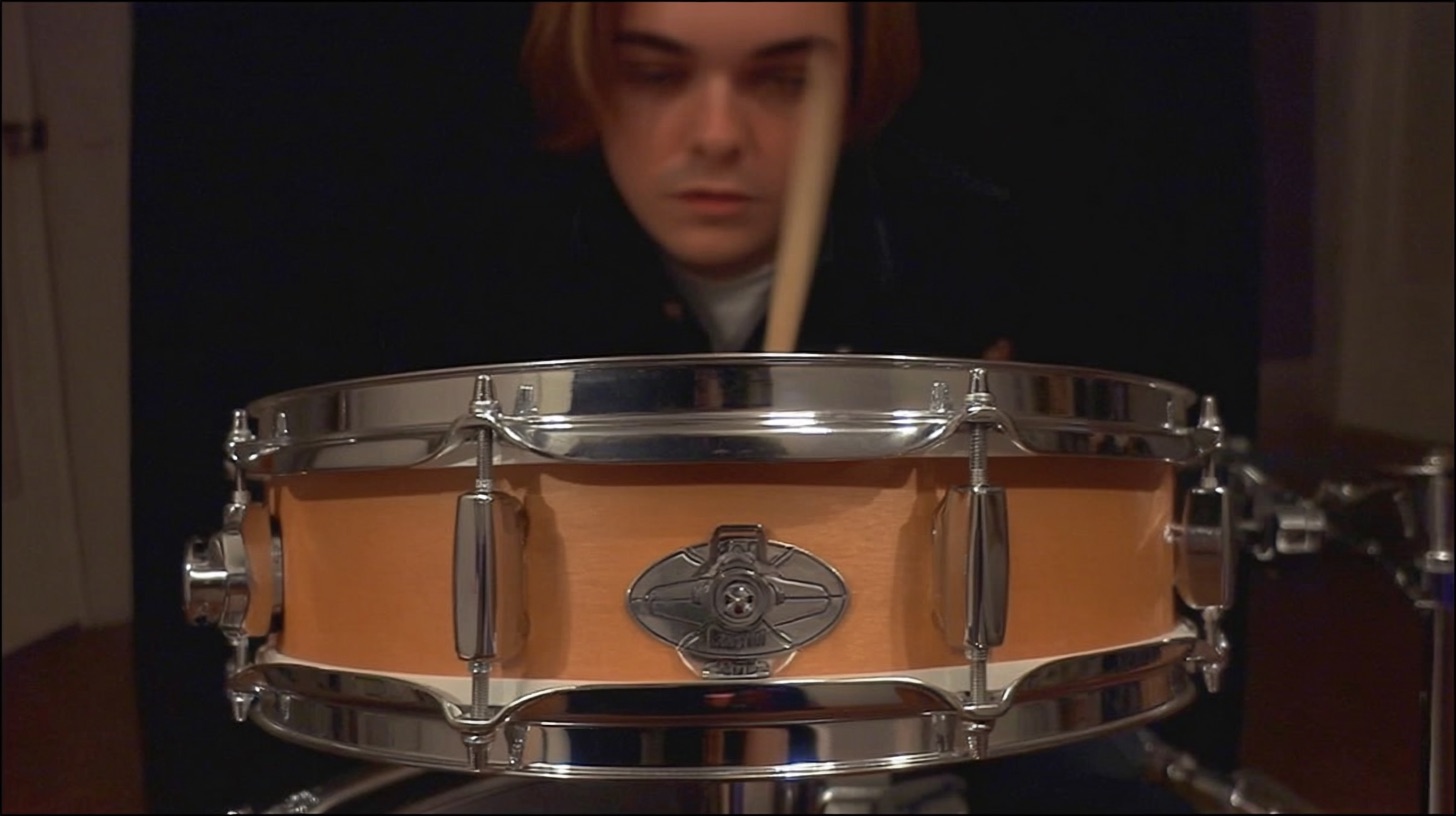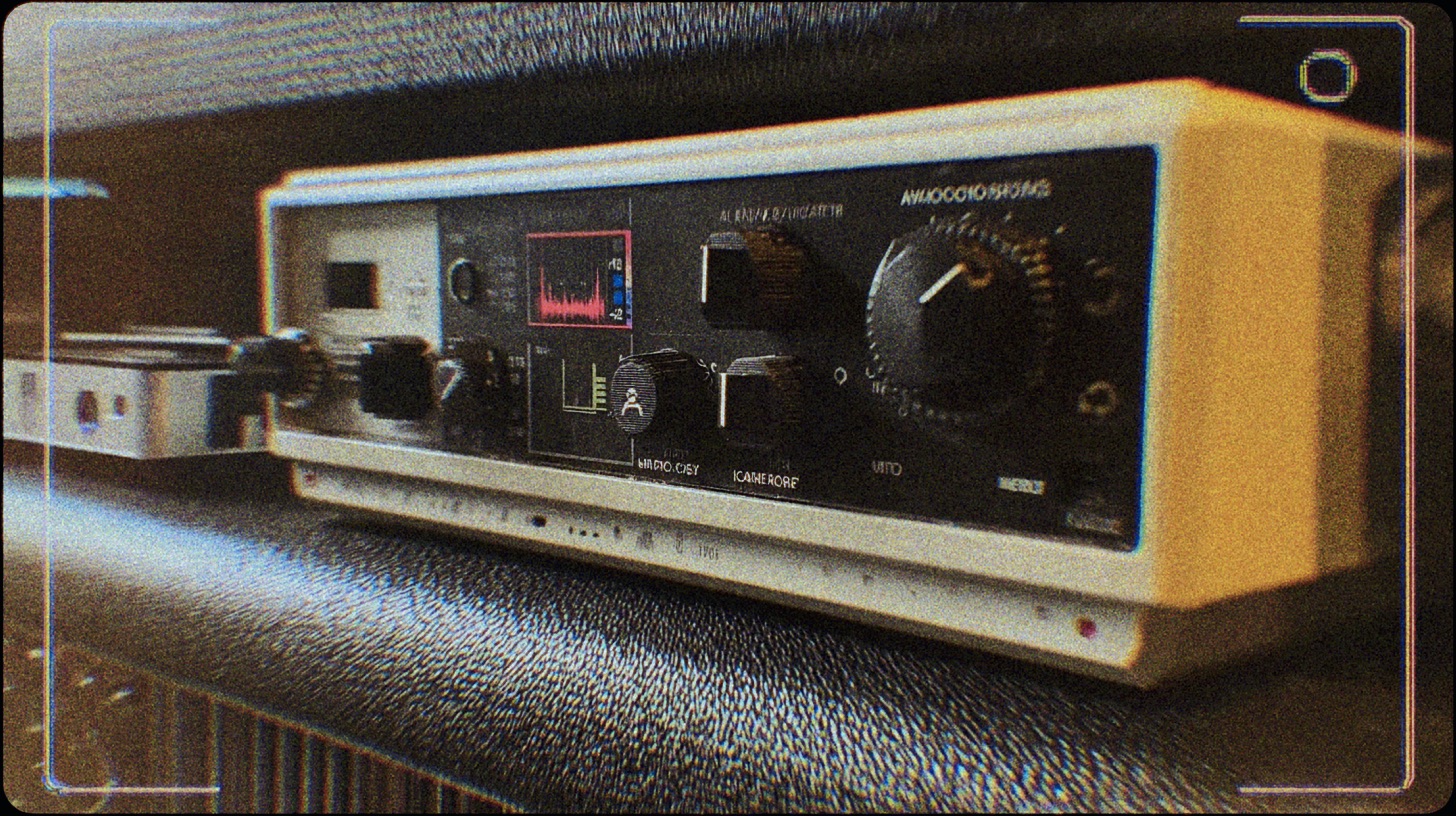
Diminished Chords: Adding Evil Dissonance to Your Metal Riffs
Nail The Mix Staff
Let’s be real, metal thrives on sounds that are aggressive, dark, and often downright unsettling. While a downtuned, high-gain power chord through a roaring amp like a Peavey 6505 or a Mesa Boogie Dual Rectifier gets you a long way, sometimes you need that extra twist of harmonic evil. That’s where diminished chords come in – they’re like the secret spice that can add a whole new layer of tension and sophisticated ugliness to your riffs and compositions.
Modern metal guitarists are lightyears ahead of where players were even a decade ago. It’s not just about shredding faster or tuning lower (though we love our 8-strings tuned to F#). There’s a massive focus on precision, rhythmic complexity, and an expanding harmonic vocabulary. Thanks to the internet and resources like YouTube, Riffhard, and (shameless plug) what we do here at Nail The Mix, players are absorbing theory and techniques that used to be gatekept by formal education. Diminished chords are a perfect example of this – once a more "jazzy" or classical concept, they’re now firmly in the toolkit of forward-thinking metal musicians.
This article is your deep dive into making diminished chords work in your heavy tracks. We’ll cover what they are, how to sling them into your riffs, and crucially, how to record and mix them so they cut through with clarity and menace, not just mud.
What Exactly ARE Diminished Chords? (The Quick & Dirty Theory)
Alright, no need for a full-blown music theory lecture, but a little understanding goes a long way. These chords are inherently unstable and create a strong urge to resolve, which is awesome for building tension.
The Building Blocks: Minor Thirds All The Way Down
The most common and "evil-sounding" version for metal is the fully diminished seventh chord. Here’s the formula:
- Root
- Minor third (3 semitones above the root)
- Diminished fifth (6 semitones above the root, or a minor third above the previous note)
- Diminished seventh (9 semitones above the root, or a minor third above the previous note – sounds like a major sixth enharmonically, but its function is different)
Think of it as stacking minor thirds. For example, a C diminished seventh chord (Cdim7) would be:
- C (Root)
- Eb (Minor third)
- Gb (Diminished fifth)
- A (Diminished seventh – which is actually Bbb enharmonically, but let’s not get too bogged down. Your DAW's piano roll in Pro Tools, Cubase, Reaper, or Logic Pro X will show it as an A if you spell it C-Eb-Gb-A).
You might also encounter half-diminished chords (minor seventh flat five, or m7b5). They are similar but use a minor seventh instead of a diminished seventh. They’re a bit less jarring but still cool. For maximum metallic evil, the fully diminished is usually your go-to.
Why They Sound So… Unsettling (In a Good Way)
The magic (or horror) of a fully diminished seventh chord comes from a few things:
- Tritones Galore: It contains two tritone intervals (an interval of six semitones, like C to Gb). The tritone is famously dissonant and was historically dubbed "Diabolus in Musica" or "The Devil in Music." Perfect for metal, right?
- Symmetry: Because it’s all minor thirds, the chord is symmetrical. Any note in a fully diminished seventh chord can function as the root of another diminished seventh chord with the same notes. This makes them super versatile for modulation but also gives them a "rootless" or floating, ambiguous quality.
This inherent tension is what makes them so powerful. They practically beg to resolve to a more stable chord.
Diminished Chords in the Metal Landscape: Beyond Basic Power Chords
So, you’ve got this dissonant beast of a chord. How do you actually use it in a metal context without it sounding like you just hit a bunch of wrong notes?
The Prog Metal Connection: Pushing Harmonic Boundaries
Progressive metal bands have been instrumental in bringing more complex harmony into heavy music. Think of bands like Meshuggah, Opeth, Periphery, or Gojira (all artists whose multitracks have featured on Nail The Mix). They aren’t afraid to step outside simple diatonic harmony. Diminished chords, with their ability to create intense dissonance and smooth voice leading to unexpected places, are a natural fit for this exploratory mindset. The influence of jazz fusion and contemporary classical music on prog metal has definitely helped popularize these more "out there" sounds.
Crafting Evil Riffs: Practical Applications
-
Passing Chords: This is a classic. Use a diminished chord to create tension and movement between two more consonant chords. For example, if you’re moving from a G5 power chord to an F#5 power chord, try slipping in a Gdim7 chord for a half-beat just before the F#5. The voice leading can be surprisingly smooth.
- Gear Tip: When playing fast passages with passing diminished chords, ensure your guitar tone has enough definition. An amp sim like the Neural DSP Archetype: Gojira or Archetype: Plini can provide that tight, articulate sound crucial for clarity. Set the gain a bit lower than you might for pure chugging to let the notes ring.
-
Approach Chords: A diminished seventh chord built a half-step below your target chord acts as a powerful dominant-function chord, pulling strongly towards the resolution. For instance, a C#dim7 (C#-E-G-Bb) resolves very strongly to a D minor or D major chord. Try using this at the end of a phrase to set up a big, impactful landing.
-
Building Arpeggios & Leads: Diminished arpeggios are a staple for unsettling, shreddy leads. Players like Jeff Loomis (Arch Enemy, ex-Nevermore) or Michael Romeo (Symphony X) use them extensively. The symmetrical nature means you can move patterns around the fretboard easily.
- DAW Tip: Program a diminished arpeggio into your MIDI editor in Logic Pro X or Cubase and experiment with different rhythmic placements over a heavy riff. Use a synth lead or a heavily processed guitar sample to hear how it cuts.
-
Layering with Low Tunings: When you’re tuned down to Drop G on a 7-string or even F# on an 8-string (like many modern metal bands), the inherent muddiness can be a challenge. The sharp dissonance of a diminished chord can actually cut through that low-end rumble. Try a high-voiced diminished triad over a low, crushing open-string chug.
- Guitar Tip: On an 8-string, a simple diminished shape like F (1st fret, low F# string), A (1st fret, D string), C# (2nd fret, G string) can sound massive and terrifying.
-
Creating Dissonant Pads or Textures: Don’t just think riffs. A sustained diminished chord, perhaps played with an EBow or heavily saturated with reverb (like a Valhalla Shimmer or Eventide Blackhole), can create an incredibly dark and atmospheric texture behind a lead or a vocal.
Recording & Mixing Diminished Dissonance: Clarity is Key
The "Modern Metal Mindset": Precision First
- Practice with Purpose: Use your DAW as a practice tool. Record yourself playing riffs with diminished chords to a click in Pro Tools or Reaper. Zoom in on those waveforms. Are your transients lining up? Are the notes within the chord clearly articulated, or are they flubbed? This honest self-assessment is what separates the pros from the gear hoarders.
- DI Gold: The raw DI tracks from bands we feature on Nail The Mix are often incredibly tight. This precision is the foundation. A clean, tight DI of a diminished chord progression will reamp beautifully using something like the STL ToneHub with a Will Putney or Howard Benson pack, allowing the amp's character and the chord's dissonance to shine. Sloppy DIs just turn into undefined mush.
Amp Tones for Dissonance: Don’t Smother the Evil
- Gain Staging is Crucial: Too much gain will cause the closely-voiced notes of a diminished chord to blur together into an indistinct roar. You want clarity and string separation. Dial back the gain on your amp (physical or virtual, like Positive Grid BIAS Amp 2) more than you might for simple power chords. Let the notes create the aggression, not just the saturation from pure distortion.
- Amp Choice: Amps known for their tight low-end and articulate mid-range tend to work well. Think Peavey 5150/6505s, Mesa Boogie Dual/Triple Rectifiers, ENGLs (like the Powerball or Fireball), or even some Friedman models. These amps can handle complex voicings without falling apart.
EQing Diminished Chords: Carving Space for Creepiness
- The Mud Zone: The low-mids (roughly 200Hz – 500Hz) are often where diminished chords can turn into a swamp, especially with distorted guitars. Use a parametric EQ like FabFilter Pro-Q 3 or your DAW’s stock EQ to make surgical cuts with a narrow Q if things sound congested.
- Articulation & Fizz: You want the notes to speak, so a gentle boost in the upper mids or highs (2kHz – 5kHz) can help. But be careful of introducing harsh "fizz." Like Fredrik Nordström mentioned with the Bring Me The Horizon tones, sometimes you need to find those specific nasty high frequencies (often 5kHz-10kHz+) and notch them out.
- Context is King: Always EQ in the context of the full mix. A diminished chord might sound fine in solo, but when the bass (maybe a Dingwall with Darkglass processing) and drums come in, you might need to re-evaluate how it’s sitting.
- For more deep-dive EQ strategies for metal, check out our guide on how to EQ metal guitar.
Compression: Taming or Enhancing?
- Subtlety is Key: The goal is usually to even out the performance slightly and add a bit of punch, not to squash the dynamics that make the chord feel alive and aggressive.
- Attack & Release: A relatively fast attack can help control pick transients if they’re too spiky, but too fast can dull the impact. A moderate release usually works well.
- Plugin Choices: A versatile VCA-style compressor like an SSL G-Comp emulation (from Waves, Plugin Alliance, or Brainworx) can be good for gluing things together on a guitar bus. For individual tracks, a FET compressor like a Waves CLA-76 or Arturia FET-76 can add aggressive character if used sparingly. Even the stock compressors in most DAWs are powerful tools if you know how to use them.
- Get the lowdown on the basics of compression for taming aggressive metal tracks.

100+ Insanely Detailed Mixing Tutorials
We leave absolutely nothing out, showing you every single step
Diminished Chords & The Modern Metal Producer's Edge
The truth is, the standard for musicianship and production in metal has exploded. Players are incorporating sophisticated harmony, and producers need to know how to handle it. Knowing how to effectively write, perform, record, and mix complex elements like diminished chords isn't just a "nice to have" – it's becoming a crucial skill to make your productions stand out.
This is exactly the kind of in-the-trenches knowledge you get from seeing how world-class producers wrangle these harmonically rich and aggressive tones in a real mix. If you're serious about elevating your metal productions and want to learn how the pros deal with everything from dissonant guitar layers to pummeling drums and intricate arrangements, Nail The Mix is where you can unlock your sound and learn mixing modern metal beyond presets. Every month, you get access to the actual multitracks from massive metal songs and watch the original producer mix them from scratch, explaining every decision.
Final Thoughts: Embrace the Dissonance
Diminished chords are a potent tool in the modern metal arsenal. They can add unparalleled tension, darkness, and sophistication to your music. The amazing gear and plugins available today (from an Empirical Labs Distressor on your drum bus to a Neural DSP Archetype: Petrucci on your leads) certainly help, but they're not magic bullets.
The real power comes from combining this harmonic knowledge with a dedication to precision in your playing and smart, critical mixing choices. So, fire up your DAW (be it Ableton Live, Studio One, or good old Pro Tools), start experimenting with these evil-sounding chords, analyze your playing, and get brutally honest with how they translate in a mix. You might be surprised at the new levels of heavy you can achieve.
Get a new set of multi-tracks every month from a world-class artist, a livestream with the producer who mixed it, 100+ tutorials, our exclusive plugins and more
Get Started for $1





